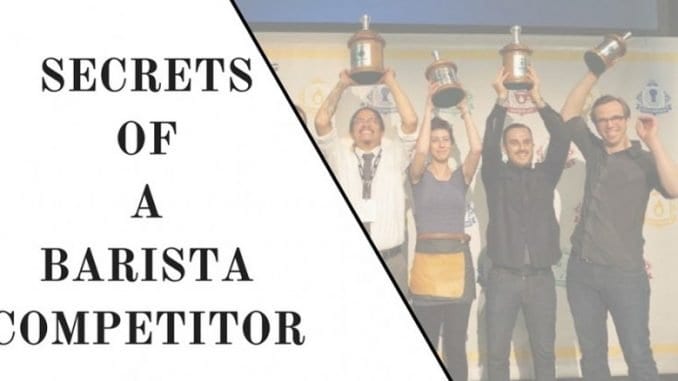
In this series, we’ll share the secrets of barista competitors. From choosing a theme to how to set a practice schedule, we’ll talk to seasoned competitors about how to compete smartly, efficiently, and effectively.
Photos by Dianne Jialei Wang
We’re deep into coffee competition season–Knoxville CoffeeChamps showed us that our U.S. competitors are working hard to showcase their coffees and incorporate new techniques in service, and Austin CoffeeChamps are just around the corner. For the last few weeks we’ve focused on American competitors, but for this chapter of our series, we’re going to focus on international competitors. From world champions to seasoned competitors, we’re going to turn to our global coffee community for advice and tips on how to score well during competition.
Sam Low of Code Black Coffee is the current barista champion of New Zealand. Along with competing in a number of barista competitors, he’s also a champion latte art competitor, and has represented New Zealand on the world stage at WBC last year. He’s known for his interesting–and high-scoring–signature drinks, so we asked him for his best advice on how to craft an excellent signature drink.
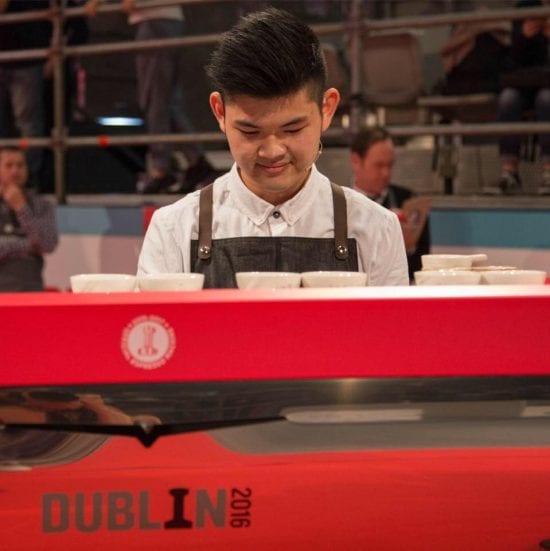
- Know your coffee.
You can’t craft a signature drink unless you know your coffee well. “By understanding your coffee inside out such as growing conditions, variety, processing techniques, farming practices and roasting you will then start to identify how many more ideas, themes and flavors you could then potentially use because of all the extra information you’ve obtained,” shares Sam. He gives an example: “If you have a coffee that is a washed processed, grown at a high elevation, has a varietal that is very sweet and balanced in acidity, roasted light to preserve aroma and juiciness then already you have so many possible things to work with.”
Signature drinks don’t just come out of nowhere, and knowing your coffee will tell you a lot about the direction you should go in. Going back to the above example, Sam can already begin building an outline of a drink. “Automatically I can predict ingredients that represent the descriptions of juiciness and acidic but balanced, perhaps maybe oranges or mandarin? Ingredients that are aromatic, maybe tea or flower petals? Ingredients that resemble or enhance clarity like soda water or other forms of dilution?” Just by knowing a few key things about your coffee, you can begin to narrow down the field of options and craft a beverage meant to bring the best out of the coffee.
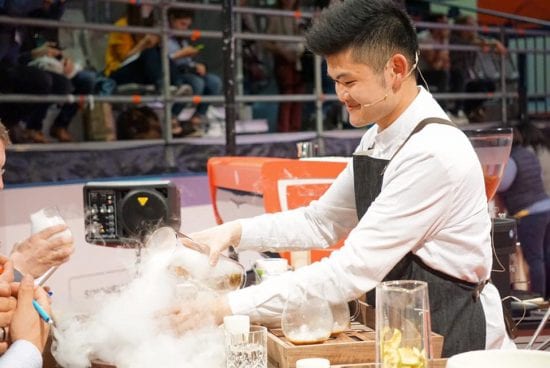
- Create a drink that represents your theme.
You’ve probably long chosen a theme (if you haven’t, read Andrea Allen’s advice on choosing a theme), but you should also try to craft your drink to support your theme. “The ideas created, concept being portrayed and theme being showcased will be a major part of your signature beverage, in fact the signature beverage should almost do all of the justification on your whole performance, its the drink that will confirm or highlight points from your entire routine and when executed superbly it could raise eyebrows, maybe even get the judges and the audience to question themselves, ‘Did that just happen?’” shares Sam.
Again, Sam finds the best way to show this is through an example:
“Lets say I want to highlight a particular processing method from this coffee and portray that into my signature beverage. E.g. Coffee X is very unique, it is a naturally processed Kenyan, the entire routine is based on the uniqueness of this Kenyan. So from here I would look at how it was processed, Coffee X is naturally dried for 27 days slowly on raised beds to bring out the fruit flavors of strawberry and coconut. To represent what the slow drying does to the flavor I could take coconut pieces and fresh strawberries and slow dry them in the sun evenly to create dried fruit that I then could then use to then add to my signature beverage either brewed as a tea or made into a syrup to mimic the special Kenyan natural process. By linking unique characteristics of the coffee to its special qualities you will already have an upper hand on the score-sheet for synergy as those flavors and preparation techniques for this coffee are linked and are only specific to this match.”
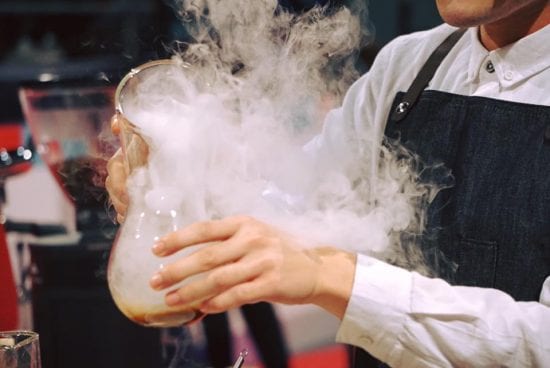
- Make a decision on what flavors you want to bring out in your drink.
Once you know your coffee and understand the flavors it presents, you’re going to have to make some decisions. Getting to know your espresso means isolating the flavors of your espresso. “I will then write down the qualities of flavor my coffee has, from here I can identify what my coffee lacks and what positive attributes it contains. Now I can decide to choose which route I want to go towards whether I want to focus on balance in flavor where I would use ingredients to fill in the gaps of what my coffee lacks,” Sam shares of his development process. “If my coffee lacks acidity and aroma but contains high sweetness and body, I could then use ingredients to boost those up for it to be more well rounded—OR alternatively I can choose the other route of highlighting the positive qualities my coffee has to make it more exaggerated and stand out.”
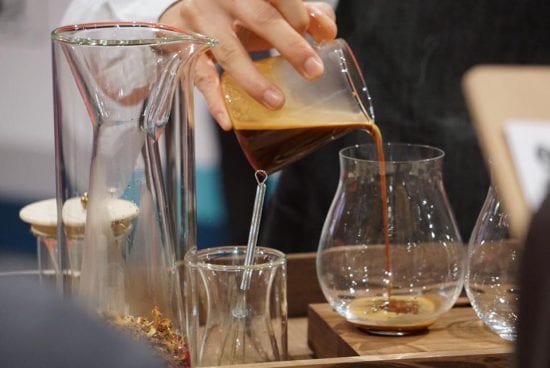
- Follow the scoresheet.
None of the points above matter if you don’t follow the rules of the scoresheet. Seems obvious, right? “It may sound silly but even ingredients that are unassuming could contain alcohol like certain bitters and/or infusions. If you’re unsure email the organizer in charge of the competition and double check,” shares Sam. Likewise, forgetting that each drink needs at least one espresso shot could also disqualify your drink, or forgetting to give tasting notes can likewise result in a lower score.
After clarifying the rules, go through each section of the signature drink course one by one. “First high scoring section in the signature beverage category is, ‘Is your beverage well explained, introduced and prepared?’ To get high scores in this part is basically ask yourself ‘why’ with whatever you’re doing for the signature beverage and if the judges don’t ask them selves the same question then you’ve explained and introduced your beverage well.”
Next is creativity and synergy. “This part of the scoring can be tricky to understand…but basically it means that the judges would like to see innovation either in technique of preparation, creative flavor combinations, new concepts of beverage assembly and combinations.” Essentially, if you use new and interesting techniques while creating a beverage that could not have been made as great without the ingredients you chose—while still maintaining the dominant taste of espresso—you’ll score well.
Lastly, there’s taste balance and accuracy of flavor. “[This category] is made to be judged as objectified as much possible and the judges are usually calibrated vigorously to do so,” shares Sam. So, along with making sure to give flavor notes to your drink (this is the second year this has been required) you should get as many people to try your drinks. “Regardless of coffee and competition experience, everyone has taste palate and perception of flavors, you want to create a calibrated accuracy of flavor for your beverages too.”

